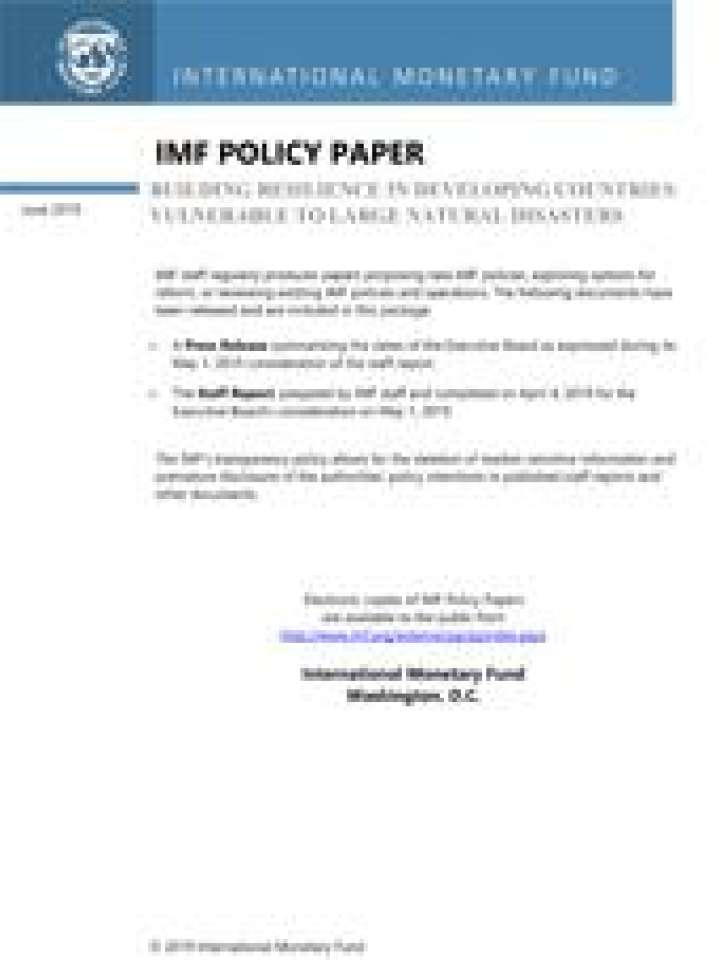Building resilience in developing countries vulnerable to large natural disasters
Many developing countries are vulnerable to natural disasters that can have large human and economic costs: disaster risk management for these countries is a macro-critical challenge. In recent years, the IMF has been underscoring the macroeconomic risks of climate change and natural disasters for many countries (typically either small or poor), including their limited capacity to develop, finance, and implement a full disaster risk-management strategy. This paper discusses the components of such a strategy—drawing on consultations with other international organizations and on discussions at recent high-level conferences on building disaster resilience in the Caribbean and in the Pacific regions—and looks at how support for national resilience-building from international financial institutions (IFIs) and other development partners might be better coordinated.
The paper views disaster risk management through the lens of a three-pillar strategy for building structural, financial, and post-disaster resilience. Enhancing structural resilience requires infrastructure and other investments to limit the impact of disasters (Pillar I); building financial resilience involves creating fiscal buffers and using pre-arranged financial instruments to protect fiscal sustainability and manage recovery costs (Pillar II); and post-disaster (including social) resilience requires contingency planning and related investments ensuring a speedy response to a disaster (Pillar III). A full national disaster resilience strategy (DRS) requires actions on all three pillars, grounded on a clear diagnostic.
International financial institutions and other development partners offer various forms of support to disaster-vulnerable countries, but many countries have limited capacity to take full advantage of such support, which can be fragmented and poorly coordinated across providers. This paper argues that a fleshed out nationally-owned DRS could act as the anchor or platform for coordinated support from development partners, which would be needed both to develop and implement the DRS. Such a strategy, if endorsed by the various stakeholders, including the International Monetary Fund's endorsement of the associated macroeconomic framework, could also have a strong catalytic effect in mobilizing concessional donor support.
Explore further
